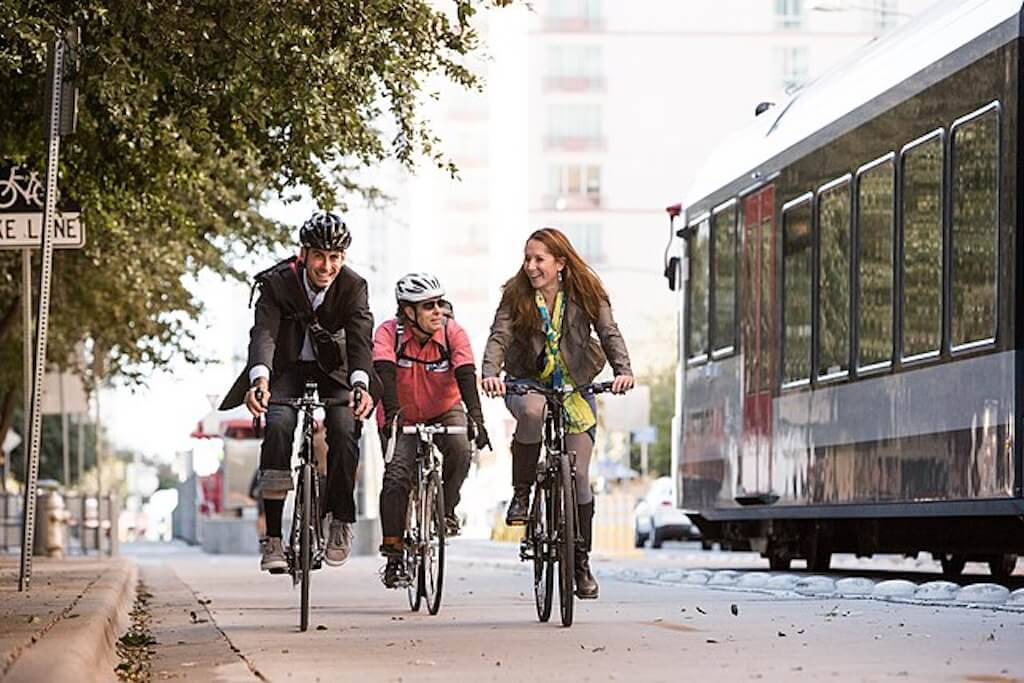Autumn Gear Guide
Find inspiration in our Gear Guide that will keep you out on your bike through wind or rain.
Download NowChoosing the perfect bicycle commute route is about more than just transportation; it’s a lifestyle choice that promotes fitness, sustainability, peace of mind, efficiency, safety and a deeper connection with your surroundings. Whether you’re a seasoned cyclist or just starting to explore the benefits of bike commuting, the journey can be optimized with careful planning […]
Choosing the perfect bicycle commute route is about more than just transportation; it’s a lifestyle choice that promotes fitness, sustainability, peace of mind, efficiency, safety and a deeper connection with your surroundings. Whether you’re a seasoned cyclist or just starting to explore the benefits of bike commuting, the journey can be optimized with careful planning and insights from experienced riders. Let’s have a look at the various aspects of planning, preparing, and perfecting your bicycle commute route based on the invaluable tips shared by seasoned bicyclists.
Conducting a dry run on a weekend is a crucial step in familiarizing yourself with the actual commuting conditions. This simulation allows you to identify potential challenges, such as busy intersections or problematic road conditions. Take the opportunity to ride the route at different times of the day, providing a holistic understanding of the conditions you might encounter during your actual commute.
To streamline your morning routine, prepare your gear and check your bike the night before. Creating a checklist can help minimize the chances of forgetting essential items, ensuring a smoother start to your day. Lay out your clothes, pack your bag, and perform a quick maintenance check on your bicycle to address any potential issues before they become a problem during your commute.
“Getting stuff ready the night before is so key. Anytime you’re rushing in the morning, you’re destined to forget something important.”
Leverage Strava heat maps to identify popular cycling routes. The bright areas on the heat map often indicate well-frequented and logically chosen paths, providing valuable insights into community-preferred routes. Take the time to explore these routes, noting any specific features or challenges they present. Understanding the preferences of fellow cyclists can contribute to a more informed decision when planning your commute.
“I look at Strava and see where most people ride. I trust that where the heat map is bright is logically the best route.”
Avoiding hills whenever possible can help you arrive at your destination without breaking a sweat. Test your bicycle commute route on a day off, loaded as you would be during your daily commute, to gain a practical understanding of the challenges you might face. Pay attention to the road conditions, potential bottlenecks, and areas that may require extra caution. This pre-riding strategy not only enhances your physical preparation but also equips you with mental readiness for your regular commute.
“Try to load yourself/bike as you’d load it to commute, then do one ride round-trip to your destination. Doing the round-trip ride while you’re amped up will give you a good idea of how tiring the one-way will feel when you’re unmotivated.”
Exploring residential streets and side roads, as well as utilizing satellite views, can uncover potential shortcuts not marked on map apps. These hidden paths may provide a more efficient and enjoyable commute. However, be sure to physically ride these shortcuts during your weekend exploration to assess their feasibility, safety, and any potential challenges they might pose.
“Sometimes the shortest route is the long way around. Living in a hilly area, it’s easier to detour two blocks over & back to avoid climbing a large hill.”

Consider factors like hills, road quality, and traffic – elements more crucial for cycling than driving. Opt for calm streets and routes that navigate around potential obstacles to enhance the quality of your commute. This strategic approach involves thinking beyond the most direct path and prioritizing factors that contribute to a safer and more enjoyable biking experience.
“The most direct route is driving thinking. Hills, road quality, traffic don’t really matter. But they matter a lot for cycling.”
Prioritizing safety includes choosing safer, well-lit paths, especially during dark months. Utilizing Google Maps walking directions for potential shortcuts and considering a phone holder for easy navigation further contribute to a secure commuting experience. Enhance your safety by investing in high-visibility clothing and accessories, making you more noticeable to other road users.
Insight: “Have a good bike that’s going to be reliable & have good lights.”
Having alternative bicycle commute routes at your disposal not only keeps your commute interesting but also allows you to adapt to different conditions seamlessly. While one route might be your primary choice, having a backup plan can be invaluable in case of road closures, construction, or unexpected events. Explore different routes during your weekend rides to understand their unique characteristics and choose the one that best suits your mood or circumstances.
Insight: “I have several routes, sometimes using main roads, other times back roads, both are safe if you know how to ride as traffic.”
Utilize apps like Komoot for bicycle commute route planning, consider multi-modal commuting options, and always carry spare tubes and a pump for potential bike issues. These measures ensure you’re well-prepared for any unforeseen challenges. Additionally, stay informed about the weather conditions and plan accordingly. If your area experiences frequent rain, for example, having appropriate rain gear can make a significant difference in your overall comfort during the commute.
Find inspiration in our Gear Guide that will keep you out on your bike through wind or rain.
Download Now
Leave a comment